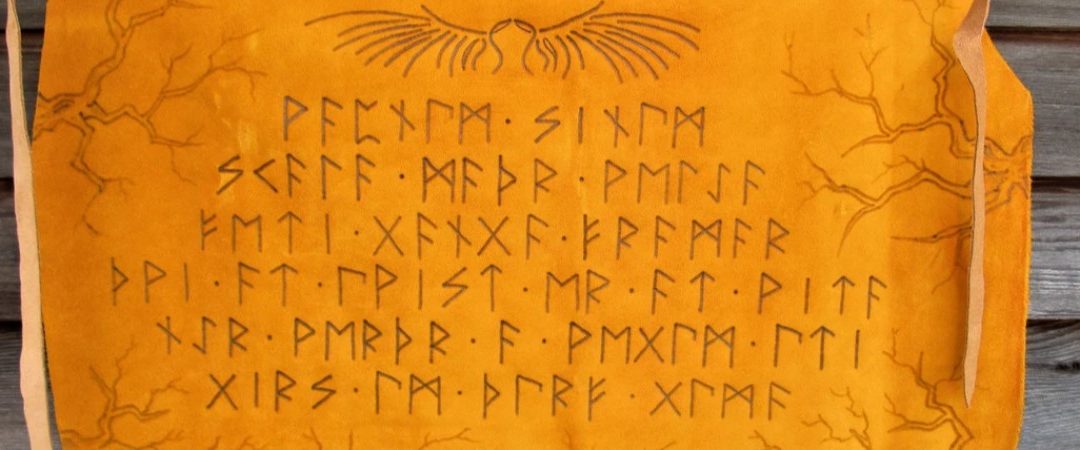What is the Norse wisdom rune?
In Norse mythology, the god Odin is associated with wisdom and knowledge. He is often depicted as a wise old man with one eye. One of the most famous stories about Odin involves him sacrificing one of his eyes in order to gain knowledge from the well of Mimir. In addition to this story, there are many symbols and objects associated with Odin that represent wisdom and knowledge. Many of these symbols are in the runic alphabet, which was used by the Vikings for writing and divination. A rune for wisdom was believed to be a powerful symbol that could be used to tap into the knowledge of the gods. In modern times, people who are interested in Norse mythology often study the runes in order to gain insight into the ancient wisdom of the Norse people.
There are many other rune meanings, to see them all, check out our Complete Elder Futhark Rune Guide
The Elder Futhark
What is the Elder Futhark?
The Elder Futhark is a rune alphabet that was used by the Germanic peoples of northern Europe, Scandinavia, and the British Isles during the Early Middle Ages. The name “Elder Futhark” comes from the first six runes of the alphabet: Fehu (F), Uruz (U), Thurisaz (TH), Ansuz (A), Raidho (R), and Kaunan (K), and can therefore be literally translated as “the old ABC’s”. These rune symbols were carved into wood or stone for use as magical amulets or talismans. Each rune had its own meaning and purpose, and some were believed to have special powers. At least 6 can be considered a dedicated rune for wisdom, these are Ansuz, Kaunan, Berkana, Mannaz, Laguz, and Dagaz. The Elder Futhark fell out of use after the Christianization of the Germanic peoples in the 11th century AD. However, it has been revived in recent years by people who are interested in paganism and Norse mythology.
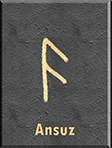
1. Ansuz
What does Ansuz rune symbolize?
The Ansuz rune is often associated with the god Odin, who is the patron of wisdom and knowledge. In Norse mythology, Odin is sometimes portrayed as a one-eyed wanderer who sacrifices an eye in order to gain wisdom. This story highlights the connection between the Ansuz rune and wisdom, as well as the role of sacrifice in acquiring knowledge. The Ansuz rune can also be seen as a symbol of communication and divine inspiration. In many cultures, wisdom is seen as a gift from the gods, and it is often through communication that we receive this gift. The Ansuz rune therefore reminds us that wisdom comes from above and that we should be open to receiving guidance from the divine.
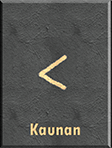
2. Kaunan
What does Kaunan rune symbolize?
The Kaunan rune is one of the most ancient and sacred symbols of wisdom in Norse mythology. It represents the union of two worlds: the world of the gods and the world of mortals. The symbol is also associated with rebirth and fertility. According to legend, the Kaunan rune was carved into the first tree that was ever created. This tree was known as Yggdrasil, and it was said to be the link between all the planes of existence. The Kaunan rune is also said to represent the three Norns, who were the goddesses of fate in Norse mythology. These goddesses were responsible for spinning the thread of life, and they were said to be able to see into the future. The Kaunan rune is a powerful symbol of wisdom, and it is still used by many people today as a way to connect with their Norse heritage.
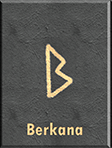
3. Berkana
What does Berkana rune symbolize?
The Berkana rune is one of the most popular runes in modern times. Its symbol is a stylized version of the birch tree, and it is associated with wisdom, new beginnings, and fertility. In the Elder Futhark, the rune alphabet used by the ancient Germanic peoples, Berkana represented the sound “b.” In Scottish Gaelic, the word “berk” means ” birch.” In Old Norse, the word “ber” meant “bear.” The Berkana rune is often seen as a symbol of strength and courage, as well as new beginnings and fresh starts. It can be used to represent birth, growth, and new life. It can also be used as a protective symbol, guarding against negative energy and helping to attract positive vibes. Whether you’re looking for a talisman of strength or a charm of new beginnings, the Berkana rune is a powerful symbol to add to your collection.
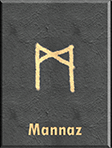
4. Mannaz
What does Mannaz rune symbolize?
The Mannaz rune is one of the most widely known and used runes in modern times. Its meaning is often interpreted as “humanity” or “mankind.” However, the Mannaz rune actually has a much deeper meaning. In Norse mythology, Mannaz is the son of Odin and a giantess. He is said to be the ancestor of all humans. As such, the Mannaz rune represents wisdom, family, and the human race as a whole. It is a powerful symbol of our shared humanity and our ability to work together for the greater good. When used in runesets, the Mannaz rune often appears alongside other symbols of strength and unity, such as Fehu and Uruz. Together, these runes remind us that we are all connected and that we have the power to make positive change in the world.
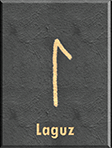
5. Laguz
What does Laguz rune symbolize?
The Laguz rune is one of the most because it can be interpreted in a number of ways. In general, however, the Laguz rune is associated with wisdom and knowledge. This is because the Laguz rune is often used to represent the Greek letter lambda, which is the symbol for wisdom. Additionally, the Laguz rune has also been linked to the Celtic goddess Brigid, who is known for her wisdom and knowledge. As a result, the Laguz rune is often seen as a symbol of wisdom and knowledge.
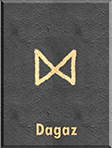
6. Dagaz
What does Dagaz rune symbolize?
The rune Dagaz is often associated with wisdom and understanding. Its literal meaning is “day” or “break of day,” and it is said to represent the moment when light breaks through the darkness. This symbolizes the wisdom that comes from knowledge and experience. In some traditions, Dagaz is also seen as a symbol of transformation, signifying the potential for change and growth. Many people see it as a reminder that even in the darkest of times, there is always hope for a better tomorrow. Regardless of its specific meaning, Dagaz is a powerful rune that can provide guidance and wisdom for those who seek it.
Other Norse Wisdom Runes
Aside from the Elder Futhark, which contains the most common and important, there are several other runes and symbols for wisdom. Most commonly, any symbol associated with Odin, the god of Wisdom, can be considered a wisdom rune, but there are some that are more specific:
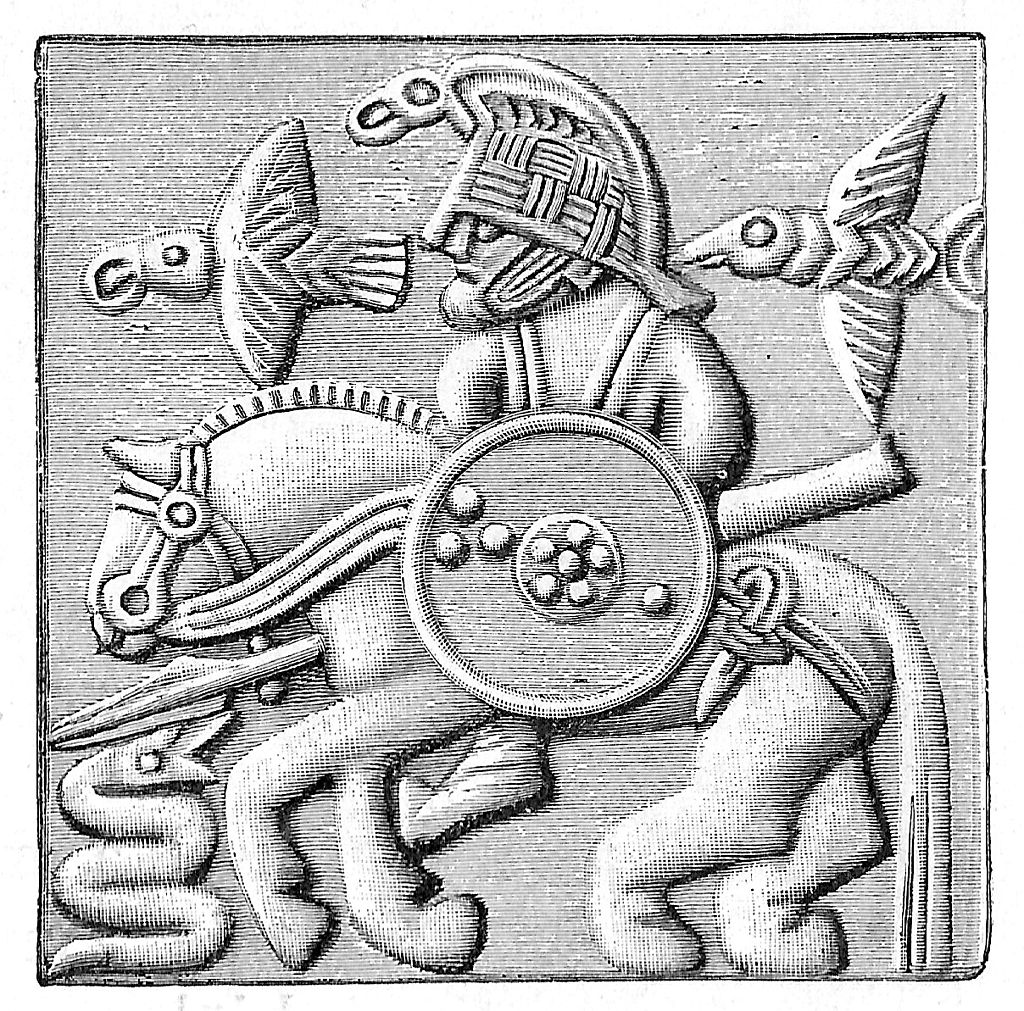
Huginn and Muninn guiding Odin, engraving from a helmet
Huginn and Muninn
In Norse mythology, Huginn and Muninn are a pair of ravens who serve as the eyes and ears of the god Odin. Their names mean “thought” and “memory” respectively, and they are said to fly around the world every day, gathering information for their master. As such, they are often seen as symbols of wisdom and knowledge. In some stories, they are even said to be able to speak, and they often give counsel to Odin in times of need. Whether or not they are truly wise is up for debate, but there is no doubt that Huginn and Muninn are among the most interesting and iconic creatures in Norse mythology.
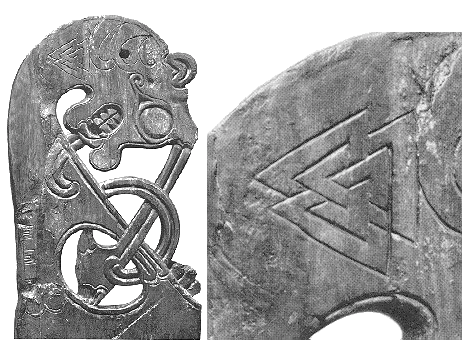
Carving from the dragonhead of the Oseburg ship, featuring a valknut
Valknut
The Valknut is a symbol with deep meaning in Norse mythology. It consists of three interlocking triangles, and is often seen as a symbol of wisdom. The word “valknut” means “knot of those fallen in battle,” and it was used as a sign of respect for fallen warriors. The Valknut is also associated with Odin, the god of war, wisdom, and death. In many ways, the Valknut represents the cycle of life and death, and the wisdom that can be gained from experiencing both. For all these reasons, the Valknut is a powerful and serene symbol with a rich history.
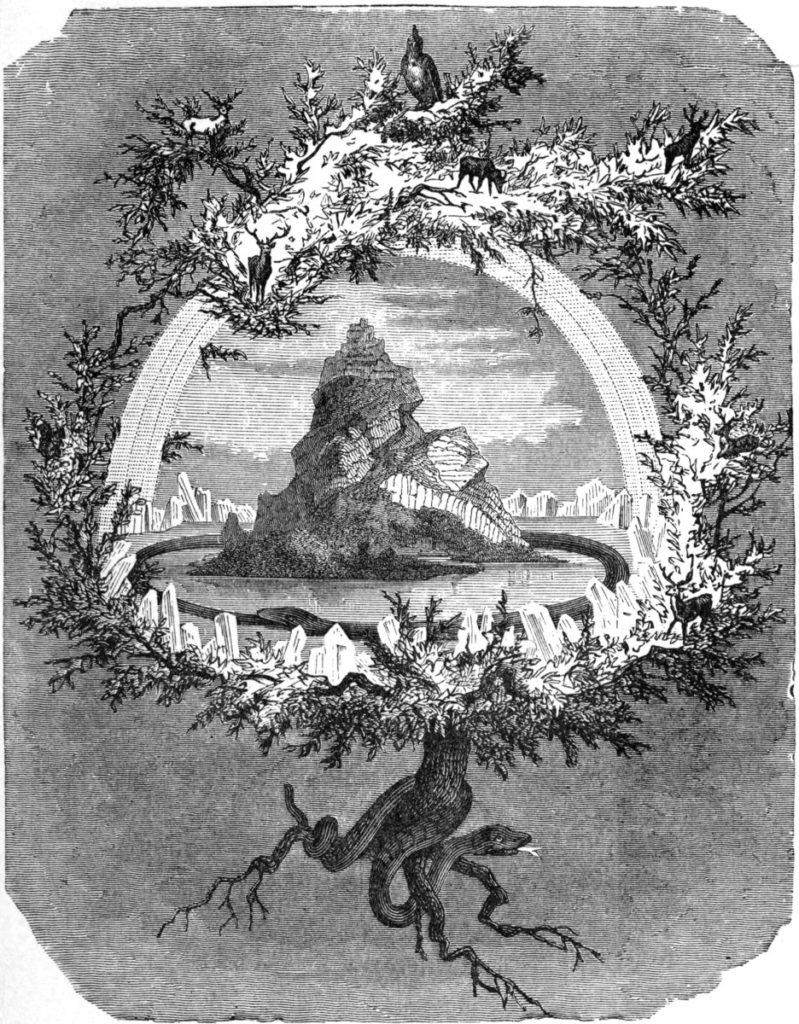
Yggdrasil featured in Friedrich Wilhelm Heine’s “The Ash”
Yggdrasil
The Yggdrasil is a wisdom tree that is also known as the ‘World Tree’. It is a sacred symbol in many cultures and is often reprsented as a giant ash tree. The Yggdrasil has three main roots that extend to different parts of the world. One root is in Asgard, the home of the gods; one is in Jotunheim, the land of the giants; and one is in Niflheim, the realm of the dead. The Yggdrasil is also home to many magical creatures, including dragons, elves, and dwarves. These creatures often visit the tree to drink from its water or eat its fruit. The Yggdrasil is also said to be the source of all wisdom in the world. This wisdom can be obtained by drinking from the well at the base of the tree.
Other Runes of Power
In your pursuit of wisdom, you must not forget to also seek other powerful symbols for strength, luck, protection and more. The following are some of the most popular runes of power in Norse mythology:
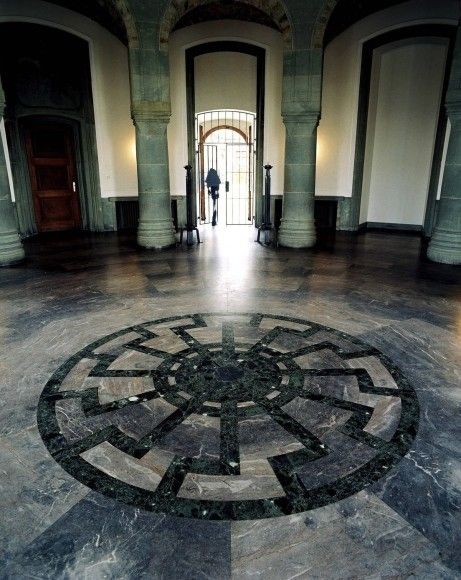
Sonnenrad floor mosaic in Wewelsburg Castle, Germany
Sonnenrad
The Sonnenrad rune, also known as the Sunwheel, is a powerful symbol of strength and protection. This rune was traditionally used to ward off evil spirits and protect against illness and misfortune. The Sonnenrad rune is also said to represent the sun, rebirth, and new beginnings. In recent years, the Sonnenrad rune has become increasingly popular as a tattoo design and is often seen as a symbol of German pride. Whether you’re looking for a tattoo with deep meaning or simply want a striking design, the Sonnenrad rune is an excellent choice.
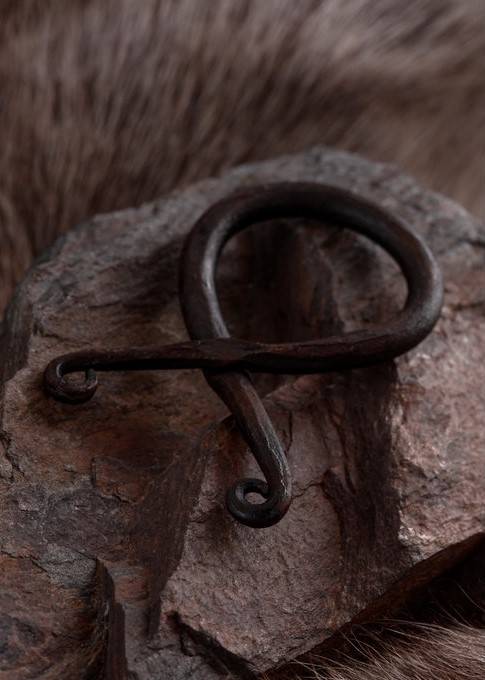
Modern iron trollkors
Trollkors
The Trollkors is a rune that is said to have the power to repel trolls. The rune is found in a number of ancient Scandinavian texts, and its meaning has been the subject of much debate among scholars. Some believe that the rune was simply used as a symbol of good luck, while others believe that it had more potent magical properties. There is no clear evidence that the Trollkors actually has the power to repel trolls, but many people continue to believe in its power. Whether or not the rune is actually effective, its use continues to be widespread in Scandinavia.
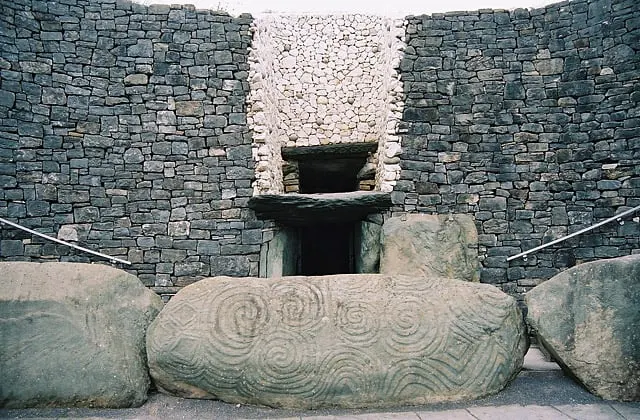
Multiple triskelion in Newgrance, Ireland
Triskelion
The triskelion is an ancient Celtic symbol that consists of three interlocking spirals. It is thought to represent the triple goddesses of Celtic mythology, or the three stages of human life (birth, life, death). The triskelion has also been associated with the sun, as the spirals are said to represent the rays of sunlight. In rune magic, the triskelion is used as a rune of protection. It is believed to repel negative energy and to promote strength, courage, and vitality. The triskelion is an enduring symbol of Celtic heritage, and its power and beauty continue to fascinate people from all over the world.

